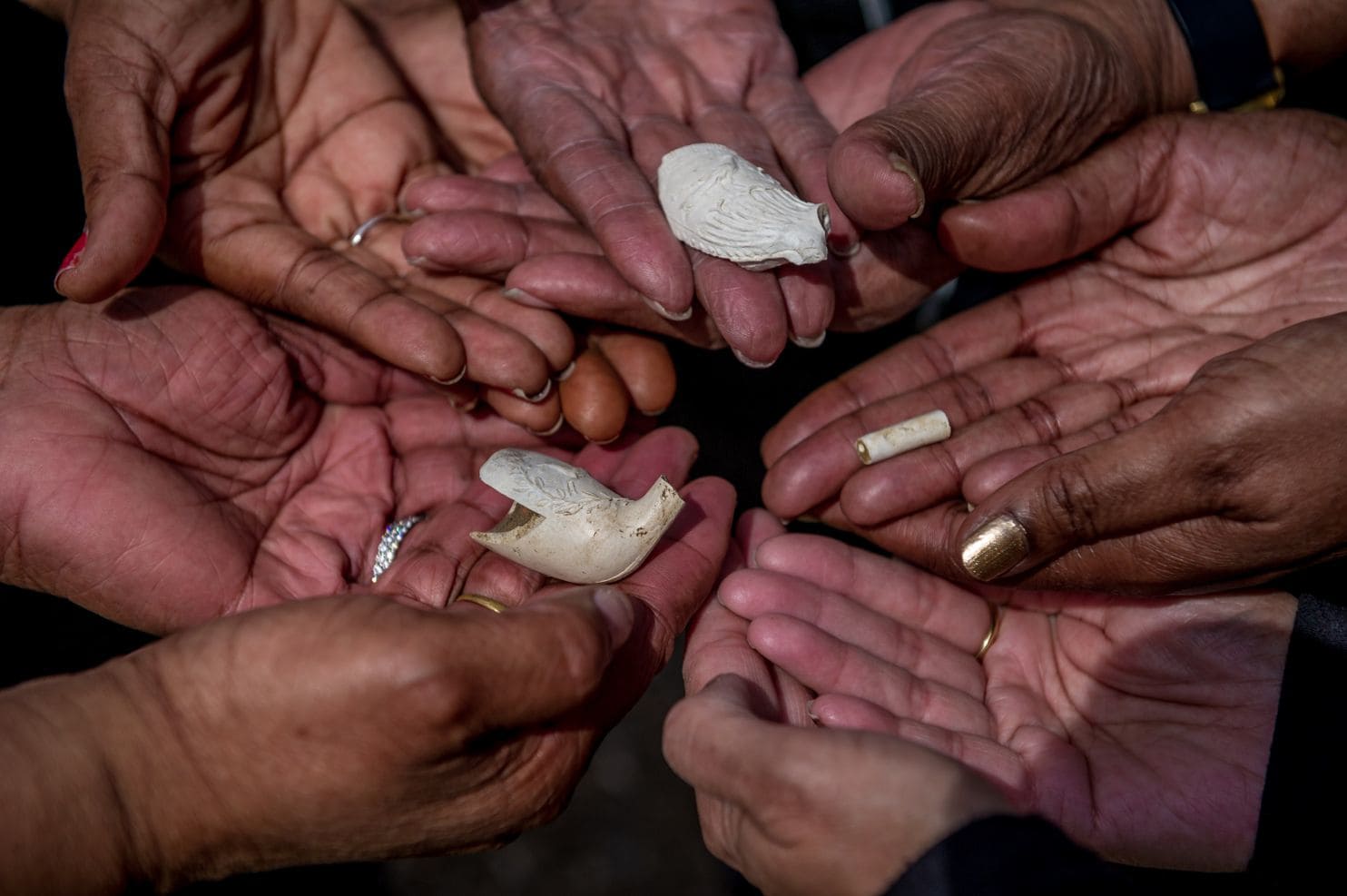Archaeologists find 200-year-old African DNA on tobacco pipe
DNA found on tobacco pipe stems uncovered by archaeologists from the Maryland Department of Transportation State Highway Administration (MDOT SHA) and Anne Arundel County from 200-year-old stone slave quarter at Belvoir along MD 178 is most closely related to Mende in Sierra Leone.
“When Africans stepped on those slave ships, they lost not only their freedom but their identity,” said Dr. Julie Schablitsky, MDOT SHA chief archaeologist. “This is one way archaeologists can help descendants reclaim their heritage.”

The slave quarter was discovered as part of an MDOT SHA Transportation Enhancement Program project to learn more about the history of along MD 178 (General’s Highway) in Anne Arundel County. The program is partially funded by the Federal Highway Administration.
The excavation yielded thousands of artifacts, including broken dishes, animal bones, and clay tobacco pipes. Knowing that DNA can survive on archaeological artifacts, Dr. Schablitsky sent four tobacco pipe stems from the slave quarter for DNA analysis to better understand the story of these Marylanders. Dr. Schablitsky conferred with Dr. Ripan Malhi (CGRH/GNDP/RBTE), who leads an ancient DNA (aDNA) laboratory at the University of Illinois Urbana-Champaign and hoped he could link the aDNA from the pipe stems with the living descendants who had genetic ties to Belvoir’s ancestors.
“We usually study ancient human skeletal remains, so having the opportunity to recover aDNA from tobacco pipes a few hundred years old was a unique challenge,” Dr. Malhi stated. He and Dr. Kelsey Witt Dillon successfully identified a woman’s aDNA on the pipe stem, but it was too degraded to link to living descendants.
To learn more, Dr. Malhi contacted Dr. Hannes Schroeder at the University of Copenhagen. Dr. Schroeder found the woman to be most closely related to Mende living in present day Sierra Leone in West Africa. “This is the first time scientists have lifted human DNA from a 200-year-old pipe stem and connected it with a person’s ancestry,” stated Dr. Schroeder. The results were published in the Journal of Archaeological Science.
Dr. Schablitsky believes it was an important genetic breakthrough for archaeologists and more importantly, for descendant communities.
Visiting a place where their ancestors once stood is a powerful feeling for the Belvoir descendants; knowing the location in Africa from where they came from is inspiring, descendants like Wanda Watts said. “It has been a fantastic journey watching history unfold itself on the Belvoir Plantation. Every new discovery gives us a glimpse into the lives of our Ancestors and where they may have lived before being enslaved on this continent,” Watts said.
Pamela Brogden’s ancestors were also enslaved at Belvoir. “The people in Sierra Leone are remarkable and resilient. To possibly have their blood flowing through us is an honor,” she stated.
